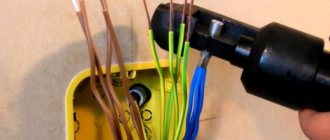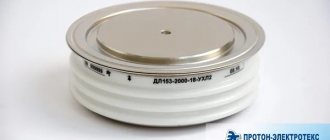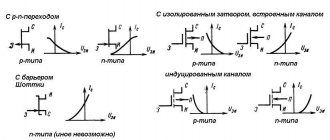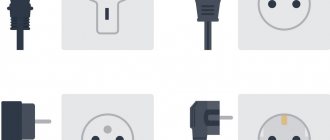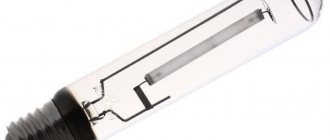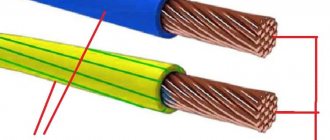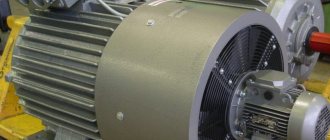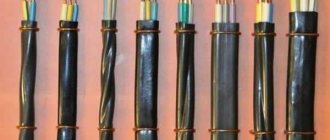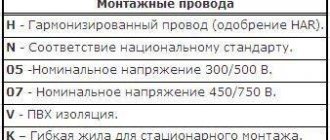Over several decades of development, the microprocessor has made its way from an object of use in highly specialized areas to a product of wide use. Today, in one form or another, these devices, together with controllers, are used in almost any area of production. In a broad sense, microprocessor technology provides control and automation processes, but within the framework of this direction, more and more new areas of development of high-tech devices are being formed and approved, up to the appearance of signs of artificial intelligence.
General understanding of microprocessors
To manage or control certain processes, appropriate software support on a real technical basis is required. This function is performed by one or a set of microcircuits on basic matrix crystals. For practical needs, chip-set modules are almost always used, that is, sets of chips that are connected by a common power system, signals, information processing formats, and so on. In a scientific interpretation, as noted in the theoretical foundations of microprocessor technology, such devices represent a place (main memory) for storing operands and instructions in encoded form. Direct control is implemented at a higher level, but also through microprocessor integrated circuits. Controllers are used for this.
We can talk about controllers only in relation to microcomputers or microcomputers consisting of microprocessors. Actually, this is working equipment, in principle capable of performing certain operations or commands within the framework of a given algorithm. As noted in the textbook on microprocessor technology by Liventsov S.N., a microcontroller should be understood as a computer focused on performing logical operations within the framework of equipment control. It is based on the same schemes, but with limited computing resources. The task of the microcontroller is largely to implement critical but simple procedures without complex circuits. However, such devices cannot be called technologically primitive either, since in modern production microcontrollers can simultaneously manage hundreds and even thousands of operations simultaneously, taking into account the indirect parameters of their execution. Overall, the logic structure of a microcontroller is designed for power, versatility, and reliability.
Microprocessor classifications
Even in the simplest configurations, MP designs have many technical and operational parameters by which classification criteria can be established. To justify the main levels of classification, three functional systems are usually distinguished - operational, interface and control. Each of these working parts also provides a number of parameters and distinctive features that determine the nature of the device’s operation.
You may be interested in: FM antenna for a music center: characteristics, selection tips
From the point of view of the typical structure of microprocessors, the classification will primarily divide devices into multi-chip and single-chip models. The former are characterized by the fact that their work units can function autonomously and execute predetermined commands. And in this example, MP will be clearly expressed, in which the emphasis is on the operational function. Such processors are focused on data processing. In the same group, for example, three-chip microprocessors can be control and interface. This does not mean that there is no operational function in them, but for optimization purposes, most of the communication and power resources are allocated to the tasks of generating micro-instructions or the ability to interact with peripheral systems.
As for single-chip MPs, they are developed with a fixed set of instructions and compact placement of all hardware on one core. From a functionality point of view, the structure of a single-chip microprocessor is quite limited, although it is more reliable than the segment configurations of multi-chip analogues.
Another important classification relates to the interface design of microprocessors. We are talking about methods of processing input signals, which today continue to be divided into digital and analog. Although the processors themselves are digital devices, in some cases the use of analog streams is justified in terms of cost and reliability. For conversion, however, special converters must be used, which contribute to the energy load and structural fullness of the working platform. Analog MPs (usually single-chip) perform the tasks of standard analog systems - for example, they perform modulation, generate oscillations, encode and decode the signal.
Based on the principle of temporary organization of operation, MPs are divided into synchronous and asynchronous. The difference lies in the nature of the signal to start a new operation. For example, in the case of a synchronous device, such commands are issued by control modules regardless of the execution of current operations. In the case of asynchronous MPs, a similar signal can be given automatically upon completion of the previous operation. For this purpose, the logical structure of an asynchronous type microprocessor provides an electronic circuit that ensures the operation of individual components in autonomous mode if necessary. The complexity of implementing this method of organizing the work of an MP is due to the fact that at the time of completion of one operation there are not always enough certain resources to begin the next one. Processor memory is usually used as a link that controls priorities in the selection of subsequent operations.
Architecture
Developers of microprocessor devices deal with a set of functional components that ultimately form a single working complex. Even a simple model of a microcomputer involves the use of a number of elements to ensure that the tasks assigned to the machine are completed. The method of interaction between these components, as well as the means of communication with input and output signals, largely determine the architecture of the microprocessor. As for the concept of architecture itself, it is expressed in different definitions. This may be a set of technical, physical and operational parameters, including the number of memory registers, bit depth, speed, and so on. But, in accordance with the theoretical foundations of microprocessor technology, architecture in this case should be understood as the logical organization of functions implemented in the process of interconnected operation of hardware and software. More specifically, the microprocessor architecture reflects the following:
- The set of physical elements that form a microprocessor, as well as the connections between its functional blocks.
- Formats and methods of providing information.
- Channels for accessing structure modules available for use with parameters for their further use.
- Operations that a specific microprocessor can perform.
- Characteristics of control commands that the device generates or receives.
- Reactions to external signals.
General information about the structure of microprocessors
In this case, the structure should be understood not only as a set of components of the working system, but also as the means of connection between them, as well as the devices that ensure their interaction. As in the functional classification, the content of the structure can be expressed through three components - operational content, means of communication with the bus and control infrastructure.
The design of the operating part determines the nature of command decoding and data processing. This complex may include arithmetic-logical functional blocks, as well as resistors for temporary storage of information, including information about the state of the microprocessor. The logic structure provides for the use of 16-bit resistors, which perform not only logical and arithmetic procedures, but also shift operations. The operation of registers can be organized according to different schemes, which also determine their availability to the programmer. A separate register is allocated to provide the battery pack function.
Bus couplers are responsible for connections to peripheral equipment. The range of their tasks also includes retrieving data from memory and forming a command queue. The typical structure of a microprocessor includes an IP instruction pointer, address adders, segment registers and buffers, through which connections with address buses are maintained.
The control device, in turn, generates control signals, decrypts the command, and also ensures the operation of the computing system by issuing microcommands for the internal operations of the MP.
External interfaces
The microprocessor is rarely considered as an isolated system for executing single-syllable instructions in a static format. There are devices that process one signal according to a given scheme, but most often microprocessor technology works with a large number of communication connections from sources, which themselves are not linear in terms of the commands being processed. To organize interaction with third-party equipment and data sources, special connection formats are provided - interfaces. But first you need to determine what exactly the communication is being done with. As a rule, controlled devices act in this capacity, that is, they receive a command from the microprocessor, and in feedback mode they can receive data on the status of the executive body.
As for external interfaces, they serve not just to enable the interaction of a certain actuator, but also to integrate it into the structure of the control complex. In relation to complex computer and microprocessor technology, this can be a whole set of hardware and software closely related to the controller. Moreover, microcontrollers often combine the functions of processing and issuing commands with the tasks of providing communication between microprocessors and external devices.
Microprocessor concept
You may be interested in: Mi Drop Xiaomi: what is this application and how to use it?
In a general sense, the concept of a microprocessor is represented as a software-controlled device or system based on a large integrated circuit (LSI). With the help of MP, data processing operations or control of systems that process information are performed. At the first stages of development, MPs were based on individual low-functional microcircuits, which contained transistors in quantities from several units to hundreds. The simplest typical structure of a microprocessor could contain a group of microcircuits that have common electrical, structural and electrical parameters. Such systems are called microprocessor kit. Along with MP, one system could also consist of permanent and random access memory devices, as well as controllers and interfaces for connecting external equipment - again, using compatible communications. As a result of the development of the concept of microcontrollers, the microprocessor set was supplemented with more complex service devices, registers, bus drivers, timers, etc.
You might be interested in:A tuner is... TV tuner for TV: review, specifications and reviews
Today, the microprocessor is increasingly less often considered as a separate device in the context of practical applications. The functional structure and operating principle of a microprocessor, already at the design stages, are oriented toward use as part of a computing device designed to perform a number of tasks related to processing and managing information. The key link in the processes of organizing the operation of a microprocessor device is the controller, which serves the control configuration and modes of interaction of the system’s computing core with external equipment. An integrated processor can be considered as an intermediate link between the controller and the microprocessor. Its functionality is focused on solving auxiliary tasks that are not directly related to the purpose of the main MP. In particular, these can be network and communication functions that ensure the operation of a microprocessor device.
Microprocessor Specifications
The main characteristics of microprocessor devices include the following:
- Clock frequency. The time period during which switching of computer components occurs.
- Bit depth. The maximum number of binary bits possible for simultaneous processing.
- Architecture. Placement configuration and methods of interaction of microprocessor working elements.
The nature of the operational process can also be judged by the criteria of regularity and volume. In the first case, we are talking about the extent to which we implement the principle of natural repeatability in a specific unit of computing microprocessor technology. In other words, what is the conditional percentage of overlapping links and work items. Regularity can also be applied generally to the structure of schema organization within a single data processing system.
The backbone indicates the method of data exchange between the internal modules of the system, also affecting the nature of the ordering of connections. By combining the principles of mainline and regularity, it is possible to develop a strategy for creating microprocessors unified to a certain standard. This approach has the advantage of facilitating communication organization at different levels in terms of interaction through interfaces. On the other hand, standardization does not allow expanding the capabilities of the system and increasing its stability against external loads.
Microprocessor components
Most of the functional blocks, as well as external devices, are organized between themselves and the central MP microcircuit through an internal bus. We can say that this is the backbone network of the device, providing comprehensive communication connectivity. Another thing is that the bus can also contain elements with different functional purposes - for example, circuits for data transmission, transmission lines of memory cells, as well as infrastructure for writing and reading information. The nature of the interaction between the blocks of the bus itself is determined by the structure of the microprocessor. In addition to the bus, the devices included in the MP include the following:
- Arithmetic-logical device. As already mentioned, this component is designed to perform logical and arithmetic operations. It works with both numeric and character data.
- Control device. Responsible for coordination in the interaction of different parts of the MP. In particular, this block generates control signals, directing them to different modules of the machine at certain points in time.
- Microprocessor memory. Used to record, store and display information. Data can be associated with both worker computing operations and processes servicing the machine.
- Math processor. Used as an auxiliary module to increase speed when performing complex computational operations.
Memory in microprocessor technology
Information storage is organized using special storage devices made of semiconductors. This applies to internal memory, but external optical and magnetic media can also be used. Also, data storage elements based on semiconductor materials can be represented as integrated circuits that are included in the microprocessor. Such memory cells are used not only to store programs, but also to serve the memory of the central processor with controllers.
If we take a deeper look at the structural basis of storage devices, circuits made of metal, dielectric and silicon semiconductor will come to the fore. Metal, oxide and semiconductor components are used as dielectrics. The level of integration of the storage device is determined by the target tasks and characteristics of the hardware. In digital microprocessor technology, with the provision of video memory functions, noise immunity, operational stability, speed, and so on are also added to the universal requirements of reliable integration and compliance with electrical parameters. The optimal solution in terms of performance criteria and versatility in integration are bipolar digital microcircuits, which, depending on the current tasks, can also be used as a trigger, processor or inverter.
Microprocessor instruction structure
This structure largely depends on the general configuration and nature of the interaction of the functional blocks of the MP. However, even at the system design stage, developers lay down the possibilities for using a certain array of operations, based on which a set of commands is subsequently formed. The most common command functions include the following:
- Data transfer. The command performs assignment operations on the values of the source and destination operands. Registers or memory cells can be used as the latter.
- Input Output. Through I/O interface devices, data is transmitted to the ports. In accordance with the structure of the microprocessor and its interaction with peripheral hardware and internal units, port addresses are specified by commands.
- Type conversion. The formats and dimensional values of the operands used are determined.
- Interrupts. This type of command is intended to control software interrupts - for example, it may be stopping a processor function while I/O devices start operating.
- Organization of cycles. The instructions change the value of the ECX register, which can be used as a counter when certain program code is executed.
You may be interested in:Germanium transistors: review, characteristics, reviews. The most musical transistors
As a rule, basic instructions are subject to restrictions related to the ability to operate certain amounts of memory and simultaneously manage registers and their contents.
Functions
The range of functions is largely based on the tasks that the microprocessor will solve within the framework of a particular technological process. A universal set of functions in a generalized version can be represented as follows:
- Reading data.
- Data processing.
- Exchange information with internal memory, modules or external connected devices.
- Data recording.
- Data input and output.
The meaning of each of the above operations is determined by the context of the overall system in which the device is used. For example, within the framework of arithmetic-logical operations, electronic and microprocessor technology, as a result of processing input information, can present new information, which, in turn, will become the reason for one or another command signal. It is also worth noting the internal functionality, due to which the operating parameters of the processor itself, controller, power supply, actuators and other modules operating within the control system are regulated.
Microprocessors for general and special purposes
The main area of application of general purpose MP are workstations, personal computers, servers and electronic devices intended for mass use. Their functional infrastructure is focused on performing a wide range of tasks related to information processing. The development of such devices is carried out by SPARC, Intel, Motorola, IBM and others.
Specialized microprocessors, the characteristics and structure of which are based on powerful controllers, implement complex procedures for processing and converting digital and analog signals. This is a very diverse segment, with thousands of configuration types available. Features of the structure of this type of MP include the use of one crystal as a base for a central processor, which, in turn, can be interfaced with a large number of peripheral devices. These include input/output devices, blocks with timers, interfaces, and analog-to-digital converters. It is also practiced to connect specialized devices such as units for generating pulse-width signals. Due to the use of internal memory, such systems have a small number of auxiliary components that support the operation of the microcontroller.
Device Manufacturers
At the origins of the creation of microprocessor devices were engineers from Intel, who released a whole line of 8-bit microcontrollers on the MCS-51 platform, which are still used in some areas today. Also, many other manufacturers used the x51 family for their own projects as part of the development of new generations of electronics and microprocessor technology, including domestic developments like the K1816BE51 single-chip computer.
Having entered the segment of more complex processors, Intel gave way to microcontrollers to other companies, including Analog Device and Atmel. A fundamentally new look at microprocessor architecture is offered by Zilog, Microchip, NEC, and others. Today, in the context of the development of microprocessor technology, the x51, AVR and PIC lines can be considered the most successful. If we talk about development trends, then today the requirements for expanding the range of internal control tasks, compactness and low power consumption come first. In other words, microcontrollers are becoming smaller and more efficient in terms of maintenance, but at the same time increasing their power potential.
Features of the coprocessor structure
Even within the framework of performing standard arithmetic and logical operations, the power of a conventional MP is sometimes insufficient. For example, a microprocessor does not have the ability to execute arithmetic instructions that involve floating point numbers. For such tasks, coprocessors are used, the structure of which involves combining a central processor with several MPs. At the same time, the operating logic of the device itself does not differ fundamentally from the basic rules for constructing arithmetic microcircuits.
Coprocessors execute standard commands, but in close interaction with the central module. This configuration assumes constant monitoring of command queues over several lines. In the physical structure of a microprocessor of this type, it is possible to use an independent module to provide I/O, the feature of which is the ability to select its own commands. However, for such a scheme to work correctly, coprocessors must clearly determine the source of instruction selection, coordinating the interaction between modules.
Associated with the concept of a coprocessor device is the principle of constructing a generalized microprocessor structure with a tightly coupled configuration. If in the previous case we can talk about an independent I/O unit with the ability to select its own commands, then a tightly coupled configuration involves the inclusion in the structure of an independent processor that controls command streams.
Maintenance of microprocessor-based equipment
In accordance with regulations, microprocessor systems are serviced by teams of workers led by an electromechanic. The main maintenance tasks in this area include the following:
- Recording failures during system operation and analyzing them to determine the causes of the violation.
- Prevention of failures of the device and its components through scheduled routine maintenance.
- Elimination of device failures by repairing damaged elements or replacing them with serviceable similar parts.
- Carrying out timely repairs of system components.
Direct maintenance of microprocessor technology can be complex or small-scale. In the first case, a list of technical operations is combined, regardless of their labor intensity and level of complexity. With a small-scale operation approach, the emphasis is on the individualization of each operation, that is, individual repair or maintenance actions are carried out in an isolated format from an organizational point of view in accordance with the technological map. The disadvantages of this method are associated with the high costs of the workflow, which may not be economically justified within a large-scale system. On the other hand, minor operational maintenance improves the quality of equipment technical support, minimizing the risks of its further failure along with individual components.
MP management structure
The MP control system is based on a control unit, which is connected to several functional parts:
- Signal sensor. Determines the sequence and parameters of pulses, distributing them evenly over time across the buses. Among the characteristics of the sensors is the number of clock cycles and control signals required to perform operations.
- Source of signals. One of the functions of the control unit in the microprocessor structure is assigned to the generation or processing of signals - that is, their switching within a specific clock cycle on a specific bus.
- Operation code decoder. Performs decryption of operation codes present in the command register at the current moment. Together with determining the active bus, this procedure also helps to generate a sequence of control pulses.
Of no small importance in the control infrastructure is the read-only storage device, which contains in its cells the signals required to perform processing operations. To count commands when processing pulse data, an address generation unit can be used - this is a necessary component of the internal structure of the microprocessor, which is included in the system interface block and allows you to read the details of memory registers with signals in full.
Application of microprocessor technology
There are fewer and fewer barriers to the widespread introduction of microprocessors in various areas of industry, household and national economy. This is again due to the optimization of these devices, their reduction in cost and the growing need for automation elements. The most common uses for such devices include:
- Industry. Microprocessors are used in managing work operations, coordinating machines, monitoring systems and collecting production data.
- Trade. In this area, the operation of microprocessor technology is associated not only with computing operations, but also with the maintenance of logistics models in the management of goods, inventories, and information flows.
- Security systems. Electronics in modern security and alarm systems sets high requirements for automation and intelligent control, which is what new generations of microprocessors can provide.
- Connection. Of course, communication technologies cannot do without programmable controllers that serve multiplexers, remote terminals and switching circuits.
Types of microprocessor systems
Topic 1. General information about microprocessors and microprocessor systems
Lecture 1.1
General information about microprocessors and microprocessor systems
Introduction
The discipline “Microprocessor devices in radio-electronic equipment” belongs to a series of special disciplines.
It is studied in the second semester of the 4th year for 72 hours. Contains 38 hours of lectures, 10 - LR, 14 - PP, 10 hours of course project and independent work.
The exam is held in the 8th semester (+ mandatory test and defense of the course project).
As a result of studying the discipline, cadets must
KNOW:
· arithmetic and logical foundations of computer technology;
· general structure and operating principle of microprocessor systems;
· organization and operating modes of microprocessors and microcontrollers;
· elements of programming microprocessors and microcontrollers;
· features of the use of microprocessor devices in radio-electronic equipment;
· main stages of development of microprocessor systems based on microcontrollers and microprocessors.
BE ABLE TO:
· work with educational and research literature;
· reasonably choose architectural and structural solutions for microprocessor systems;
· rationally distribute the functions performed by the microprocessor system between hardware and software;
· optimize the technical means used in the construction of microprocessor devices.
BE AWARE OF:
· with trends in the development of microcontrollers, microprocessors and microprocessor systems;
· with the methodology for using literary sources and reference books on the subject of the discipline.
Procedure for conducting and attending classes
LITERATURE
BASIC:
1. Novikov Yu.V., Skorobogatov P.K. Fundamentals of microprocessor technology. – 4th ed., rev. – M.: Internet University of Information Technologies; BINOMIAL. Knowledge Laboratory, 2009. – 357 p.
2. Bezuglov D.A., Kalienko I.V. Digital devices and microprocessors - Rostov n/D.: Phoenix, 2006. - 480 p.
3. Mikushin A.V. and others. Digital devices and microprocessors. – St. Petersburg: BHV-Petersburg, 2010. 832 p.
4. Koryachko V.P. Microprocessors and microcomputers in radioelectronic equipment. Textbook for universities. – M.: Higher. school, 1990. – 407 p.
ADDITIONAL:
5. Ugryumov E.P. Digital circuitry. Textbook A manual for universities. – 2nd ed., revised. and additional – St. Petersburg: BHV-Petersburg, 2005. – 800 p.
6. Kalabekov B.A. Digital devices and microprocessor systems: Textbook for communication colleges. – Hotline-Telecom, 2007. – 336 p.
7. Ushkar M. N. Microprocessor devices in radio-electronic equipment / Ed. B.F. Vysotsky. - M.: Radio and Communications, 1988. - 128 p.
8. Poluyanov M.I. On-board digital computing devices and machines: Methodological manual and assignments for practical classes. – Mn.: MGVAK, 2009. – 86 p.
9. Poluyanov M.I. On-board digital computing devices and machines: Laboratory workshop. – Mn.: MGVAK, 2010. – 55 p.
The use of microprocessors and microcomputers in electronic equipment has led to the expansion of the functionality of this equipment, improving the quality of information processing, increasing the reliability and stability of operation.
Therefore, it is clear that a modern radio engineer needs knowledge both in the field of microprocessor technology and in programming radio engineering tasks in languages of various levels.
Basic Concepts
An integrated circuit (IC) is a microelectronic product that performs a specific function of signal conversion and processing and has a high packing density of electrically connected elements and crystals, which, from the point of view of requirements for testing, acceptance, delivery and operation, is considered as a single whole.
Independently: Bezuglov D.A. Digital devices and microprocessors. §2.1. Logic chips. Page 72-92.
The functional complexity of an IC is characterized by the degree of integration - the number of elements and components it contains. A quantitative assessment of the degree of integration is made by the coefficient K = log (N), where N is the number of elements and components of the circuit.
| Degree of integration | K value | Number of elements | IC name |
| <1 | to 10 | Simple (small) | |
| 1 | 11-100 | Average (SIS) | |
| 2 | 101-10000 | Big (BIS) | |
| 4-5 | >4 | >10000 | Extra Large (VLSI) |
A microprocessor (MP) is a functionally complete software-controlled device that carries out the process of digital information processing and controls this process. Performed in the form of one or less often several LSI/VLSI.
A technical system is a set of interconnected heterogeneous devices (subsystems) that jointly perform specified functions in conditions of interaction with the external environment. With a certain degree of confidence, we can say that each system consists of subsystems and, in turn, is part of a higher-level system.
A microprocessor system (MPS) is a functionally and structurally complete product, which is a circuit-constructive connection of several microcircuits, designed to perform information processing and control functions.
The components of the MPS are:
— microprocessor;
- memory;
— input/output device (external devices);
— interface diagrams.
Microprocessor kit is a set of structurally, technologically and electrically compatible integrated circuits designed for building an MPS with the required technical characteristics.
Types of microprocessor systems
The range of applications of microprocessor technology is now very wide; the requirements for microprocessor systems are very different. Therefore, several types of microprocessor systems have been formed ,
differing in power, versatility, speed and structural differences.
The following types can be roughly distinguished:
· microcontrollers are the simplest type of microprocessor systems, in which all or most of the system nodes are made in the form of a single chip;
· controllers - microprocessor control systems ,
made in the form of separate modules;
· microcomputers are more powerful microprocessor systems with advanced means of interface with external devices.
· computers (including personal ones) are the most powerful and most versatile microprocessor systems .
It is sometimes quite difficult to draw a clear boundary between these types. The speed of all types of microprocessors is constantly growing, and it is not uncommon for a new microcontroller to be faster, for example, than an outdated personal computer. But there are still some fundamental differences.
Microcontrollers are universal devices that are almost always used not by themselves, but as part of more complex devices, including controllers.
The microcontroller system bus is hidden from the user inside the chip. The ability to connect external devices to the microcontroller is limited. Microcontroller devices are usually designed to solve one specific task.
Controllers , as a rule, are created to solve a specific task or a group of related problems. They usually do not have the ability to connect additional nodes and devices, for example, large memory, input/output facilities. Their system bus is most often inaccessible to the user. The controller structure is simple and optimized for maximum performance. In most cases, executing programs are stored in permanent memory and do not change. Structurally, the controllers are produced in a single-board version.
Microcomputers differ from controllers in having a more open structure; they allow the connection of several additional devices to the system bus. Microcomputers are produced in a frame, a housing with system bus connectors accessible to the user. Microcomputers may have means of storing information on magnetic media (for example, magnetic disks) and fairly developed means of communication with the user (video monitor, keyboard). Microcomputers are designed for a wide range of tasks, but unlike controllers, they must be adapted anew for each new task. The programs executed by the microcomputer can be easily changed.
Finally, computers and the most common of them, personal computers , are the most versatile of microprocessor systems .
They necessarily provide for the possibility of modernization, as well as ample opportunities for connecting new devices. Their system bus is accessible to the user. In addition, external devices can be connected to the computer through several built-in communication ports (the number of ports sometimes reaches 10). A computer always has highly developed means of communication with the user, means of long-term storage of large amounts of information, and means of communication with other computers via information networks. The areas of application of computers can be very different: mathematical calculations, maintaining access to databases, managing the operation of complex electronic systems, computer games, preparing documents, etc.
Any task can, in principle, be performed using each of the listed types of microprocessor systems. But when choosing a type, it is necessary to avoid redundancy whenever possible and provide for the system flexibility necessary for a given task.
Currently, when developing new microprocessor systems, the most common choice is to use microcontrollers (in about 80% of cases). In this case, microcontrollers are used either independently, with minimal additional equipment, or as part of more complex controllers with developed input/output facilities.
Classic microprocessor systems based on processor chips and microprocessor kits are now produced quite rarely, primarily due to the complexity of the development and debugging process of these systems. This type of microprocessor systems is chosen mainly when microcontrollers cannot provide the required characteristics.
Finally, microprocessor systems based on a personal computer now occupy a prominent place. In this case, the developer only needs to equip the personal computer with additional interface devices, and the core of the microprocessor system is already ready. A personal computer has developed programming tools, which greatly simplifies the developer’s task. In addition, it can provide the most complex information processing algorithms. The main disadvantages of a personal computer are the large size of the case and hardware redundancy for simple tasks. Another disadvantage is the inability of most personal computers to work in difficult conditions (dust, high humidity, vibration, high temperatures, etc.). However, special personal computers are also produced that are adapted to various operating conditions.
